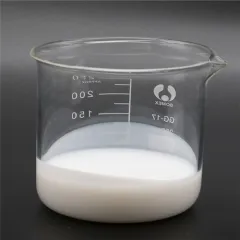Intro to Surfactants
Surfactants, or surface-active representatives, are compounds that reduced the surface area tension in between 2 fluids, a gas and a liquid, or a fluid and a solid. They play a necessary role in numerous markets, from cleansing items to pharmaceuticals. Recognizing surfactants’ buildings and applications can unlock new possibilities for innovation and efficiency.
(Surfactants)
Types of Surfactants and Their Distinctions
Anionic Surfactants
Anionic surfactants bring a negative fee on their hydrophilic end. This type is known for its exceptional detergency and foaming residential properties. Typical instances consist of salt lauryl sulfate (SLS) and salt laureth sulfate (SLES), extensively made use of in shampoos and cleaning agents. Their performance at getting rid of oils and dirt makes them prominent in cleaning products. However, they can be irritating to the skin and eyes.
Cationic Surfactants
Cationic surfactants have a positive cost on their hydrophilic end. They are less usual in cleansing products because of their limited capacity to get rid of dirt. Instead, cationic surfactants are valued for their antimicrobial residential properties and are commonly located in fabric conditioners and conditioners. Examples consist of benzalkonium chloride and cetrimonium bromide.
Nonionic Surfactants
Nonionic surfactants do not have an electrical cost. They are versatile and steady in both acidic and alkaline settings. These surfactants are commonly made use of in household and industrial cleaners as a result of their good solubilizing and emulsifying homes. Examples include alcohol ethoxylates and alkylphenol ethoxylates. They are also utilized in the food industry as emulsifiers.
Amphoteric Surfactants
Amphoteric surfactants possess both favorable and negative charges, making them sensitive to pH adjustments. At reduced pH levels, they act like cationic surfactants, while at high pH levels, they behave like anionic surfactants. This flexibility makes them mild and reliable in personal care products such as child hair shampoos and face cleansers. Instances include cocamidopropyl betaine and lauriminodipropionate.
Applications Throughout Different Sectors
Surfactants find applications in many markets due to their special homes. In the cleansing sector, they improve the removal of dust and oils, making them important in detergents and soaps. Individual treatment items benefit from surfactants’ cleansing and conditioning residential properties, supplying consumers with reliable skin care remedies. The fabric sector uses surfactants for dyeing and ending up materials, making certain vibrant colors and soft structures. Additionally, surfactants are vital in the oil and gas field, where they boost the healing of crude oil by lowering interfacial stress between oil and water. Each sector take advantage of the convenience and performance-enhancing capabilities of surfactants.
( Surfactants)
Market Patterns and Development Drivers
The need for surfactants is enhancing as brand-new applications are found. Developments in producing procedures enhance quality and lower costs. Checking makes sure materials carry out as anticipated, producing much better products. Business taking on these innovations provide higher-quality surfactants. Consumer awareness regarding the benefits of more effective and eco-friendly products drives interest in those making use of innovative surfactants. Advertising efforts focus on informing customers concerning the benefits of these ingenious surfactants, such as improved efficacy and minimized ecological impact.
Obstacles and Limitations
One difficulty with surfactants is their prospective environmental impact. Some types, particularly non-biodegradable surfactants, can gather in ecosystems, resulting in contamination. An additional concern is cost. Top notch, eco-friendly surfactants can be pricey. Nonetheless, the advantages typically surpass the costs. Products made with innovative surfactants last longer and perform far better. Firms must demonstrate the worth of these surfactants to justify the cost. Security issues also exist, as inappropriate handling or flaws can cause health and wellness dangers. Research remains to ensure safe usage. Clear communication regarding safety and security builds depend on.
Future Prospects: Advancements and Opportunities
The future looks guaranteeing for surfactants. Extra study will locate means to improve their efficiency and lower environmental effect. Advancements such as bio-based and biodegradable surfactants intend to increase sustainability while maintaining stability and efficiency. As industries seek greener and a lot more effective options, surfactants will play a key role. Their capability to give trusted and versatile performance makes them useful. New developments might unlock extra applications. The potential for growth in numerous sectors is considerable.
End of Record
This article supplies a comprehensive yet straightforward expedition of surfactants, highlighting their significance throughout various sectors. Each section concentrates on particular elements of surfactants, guaranteeing quality and convenience of understanding while keeping deepness and professionalism and reliability. Vendor
TRUNNANO is a supplier of Surfactants with over 12 years of experience in nano-building energy conservation and nanotechnology development. It accepts payment via Credit Card, T/T, West Union and Paypal. Trunnano will ship the goods to customers overseas through FedEx, DHL, by air, or by sea. If you want to know more about Chromium Oxide, please feel free to contact us and send an inquiry(sales5@nanotrun.com). Tags: Surfactants, sodium lauryl sulfate, sodium dodecyl sulfate
All articles and pictures are from the Internet. If there are any copyright issues, please contact us in time to delete.
Inquiry us

